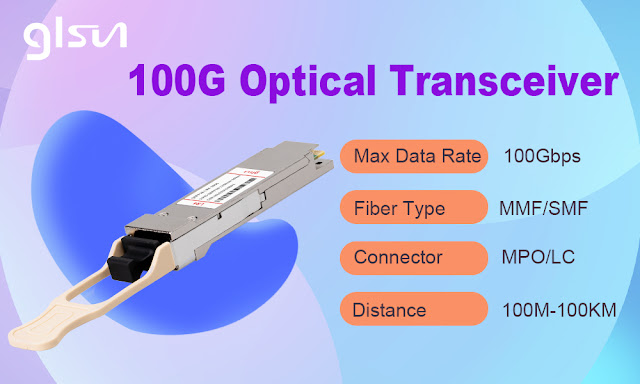Optical transceivers, also known as optical modules, are key components to enable fiber optic communications, and they play a vital role in data center systems such as servers, network equipment, and storage systems. With the continuous growth of data center network traffic, the demand for optical modules is increasing. Here, we will introduce you to the types and applications of 10G, 40G, and 100G optical modules.
l GLSUN 10G/40G/100G Optical Transceiver Types
-Types of 10G Optical Transceivers
A 10G optical transceiver is a fiber optic module used for transmission rates of 10Gbps. It can transmit data through fiber optic media to achieve high-bandwidth and long-distance data transmission. 10G optical transceivers usually adopt standardized packages and interfaces for connecting with network devices (such as switches, routers, servers, etc.). Common types of 10G optical transceivers include SFP+ optical modules, XFP modules, and X2 modules.
-Types of 40G Optical Transceivers
The 40G optical transceiver refers to the optical fiber module with a transmission rate of 40Gbps. QSFP+ and CFP are the main packaging forms, and the 40G QSFP+ optical transceiver is one of the most widely used.
-Types of 100G Optical Transceivers
A 100G optical transceiver is a fiber optic module used for transmission rates of 100Gbps. It is a key component for ultra-high bandwidth and high-speed data transmission. According to the different encapsulation methods, 100G optical transceivers are mainly CFP2, CFP4 and QSFP28. The principle of 100G QSFP28 optical transceiver is similar to that of 40G QSFP+ optical module, which adopts 4-channel full-duplex mode for data transmission.
l GLSUN 10G/40G/100G Optical Transceiver Applications
-Applications of 10G Optical Transceivers
10G optical transceivers mainly include SFP+ optical modules and XFP optical modules. The XFP optical module is relatively large because it appeared earlier, while the SFP+ optical module is an upgraded version of the SFP optical module, and has low cost, small size, and compatibility. It has been widely used in data center networks due to its strong performance and other advantages.
Today, 10G network technology and market are mature, and the solution for 10G data centers is usually 10G switches with SFP+ 10G optical modules. The 10G optical module transmits data signals through optical fibers, providing high-speed, high-bandwidth data transmission capabilities. Whether in a local area network (LAN) or a wide area network (WAN), 10G optical modules can meet the demand for high bandwidth and large-capacity data transmission.
-Applications of 40G Optical Transceivers
The current mainstream packaging type of 40G optical transceivers is QSFP+. This compact hot-swappable optical module usually has 4 transmission channels, and the data rate of each channel is 10Gbps, and this optical module complies with 10G/40G Ethernet, 20G/40G Infiniband and other standards, it greatly meets the market's demand for high density and high speed.
-Applications of 100G Optical Transceivers
The main package type of 100G optical transceiver is QSFP28. The QSFP28 optical transceiver supports 4×25G data transmission mode, and because of its high port density, low power consumption and low cost, it is favored by data center users.
100G optical modules are used to connect cloud servers, virtual machines and network devices to achieve fast data transmission and network connections. It is widely used in data centers, telecom operators, cloud computing and other fields that require large-capacity data transmission and high-speed connections.

